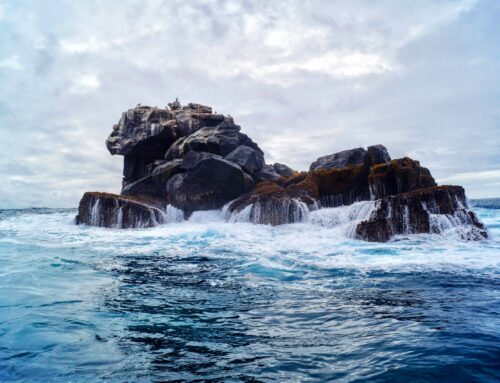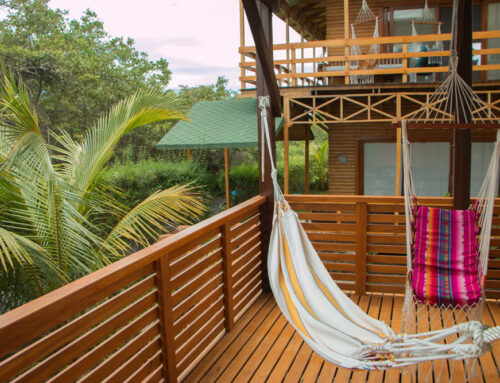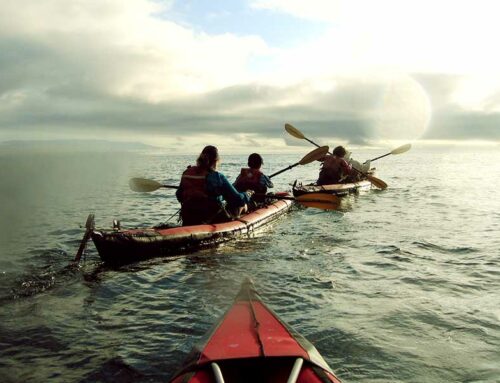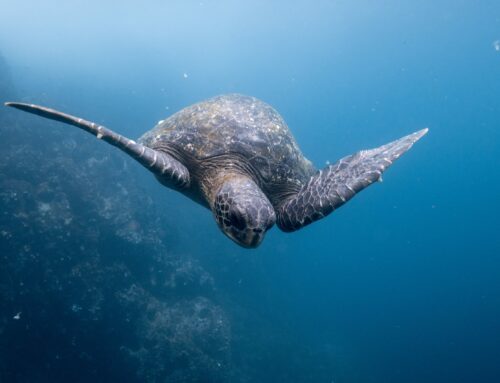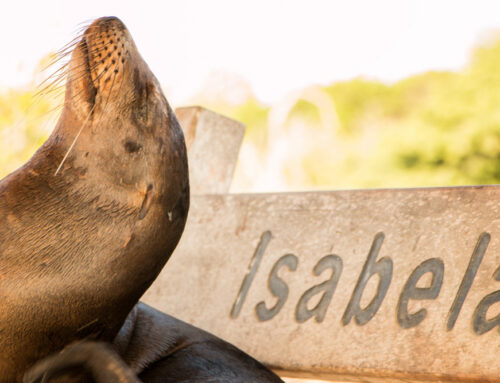Terms like ecotourism and sustainable travel are heard a lot in the current day. In fact, these phrases are heard so much that it’s hard to know what they mean. In this blog post, we talk about ecotourism in the Galapagos Islands and help you to make responsible decisions whilst discovering the islands. Read on to learn some of the best ecotourism tips we have to offer in this beautiful part of the world.
What is ecotourism?
First, let’s look at what ecotourism actually is. Ecotourism is defined as:
Whereas sustainable travel has more of a focus on reducing the impacts of an individual as they explore a destination (whether that be an impact on the environment, communities or economy), ecotourism has a much larger focus on the environment and nature. In other words, ecotourism is all about ecological conservation and and educating tourists about the natural world.
It is therefore natural that the Galapagos Islands ecotourism industry has a great deal of potential. The Islands have tried to promote ecotourism in recent years and the Galapagos National Park has been at the forefront of this push.
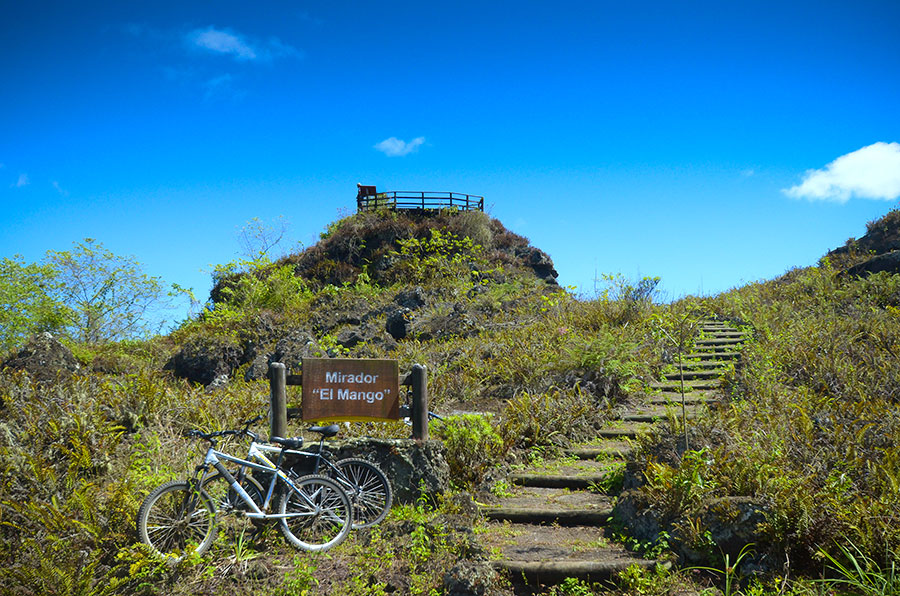
Why is ecotourism important in the Galapagos Islands?
Boasting volcanic landscapes, incredibly rich and endemic plant and wildlife, amazing marine life and rugged coastal scenery, there’s no wonder the Galapagos Islands is known for ecotourism. In fact, tourism is responsible for 85% of the archipelago’s economy.
During the pandemic, the region lost an estimated $850 million, making the return of tourism very important for local people. Before the pandemic however, tourists flocked to the islands in large numbers. Whilst this can have positive impacts on the economy and local people, it is important that visitors do not become detrimental to the environment. Tourism to vulnerable ecosystems requires a great deal of organisation and balance.
The islands deserve some strict standards of environmental protection. Resultantly, every tourist must pay a $100 entrance fee upon arrival in the Galapagos Islands. A large portion of tourism money goes to mainland Ecuador. However, around $63 million of this total supports the local economy and pushes conservation efforts on the islands each year. Tourism implemented responsibly can therefore contribute positive to the local environment.
In addition, approximately 97% of the volcanic archipelago has been protected since 1968. Meanwhile, people live on the other 3%. Plus, the Galapagos National Park has over the years implemented certain rules and policies for tourism companies. Cruises and tour operators have been given restrictions when it comes to:
- where they can visit
- how close they can get to certain places and wildlife
- how many people can visit
- what time is day is appropriate to visit
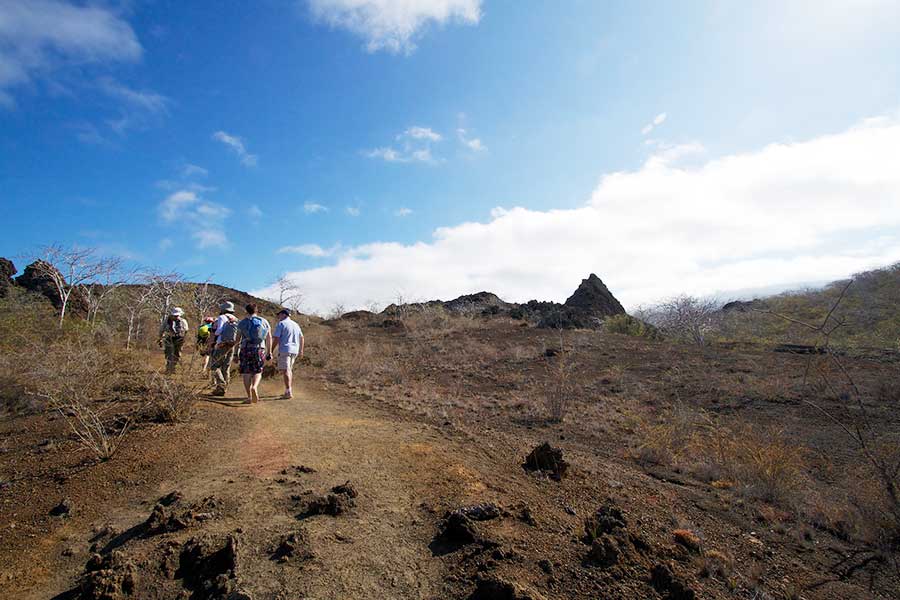
Hiking Sierra Negra Volcano
What ecotourism activities can I do in the Galapagos Islands?
The following ecotourism activities are ideal for admiring the natural wonders of the Galapagos Islands:
- Hiking – often with a knowledgeable tour guide
- Kayaking – kayak hire but also trips available with various companies across the islands
- Snorkelling – available with various companies across the islands
- Diving – available with various companies across the islands
- Mountain biking – bike hire but also organised trips available with various companies across the islands
- Visiting research/breeding/conservation centres – various tortoise breeding centres and wildlife research centres can be found on the islands
- Nature photography
- Surfing – surf hire but also trips available with various companies across the islands
Unfortunately, visitors to the Galapagos Islands often opt for cheaper tour operators (rather than those certified by responsible organisations). This kind of decision can have a large impact on the environment. Cheaper tours and experiences often come at a cost to the natural surroundings whereas, paying for a certified or highly qualified company goes a long way.
In the remainder of this article, we offer some Galapagos Islands ecotourism tips that you to help you align your values with your actions an economic support. Remember: your money is like a vote – where you choose to spend it literally translates to which companies and organisations you support and want to see thrive into the future.
How can I find ecotourism experiences in the Galapagos Islands?
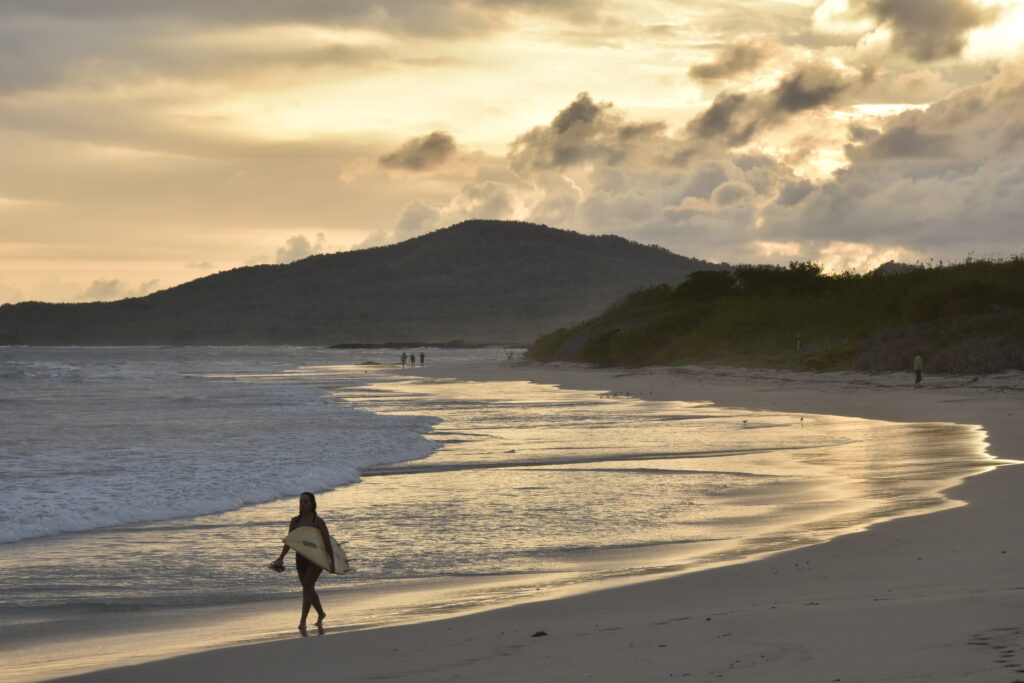
Opt for land based travel in the Galapagos
At Chez Manany, we encourage visitors to enjoy their trip on their own schedule through land-based holidays. Whilst it is common for tourists to choose Galapagos cruises, there are many reasons as to why a land-based trip is better for both a traveller and a tourist. Although the National Park does restrict the size of boats to those with less than 100 passengers, even this many people disembarking at any one time can impact the landscape. We therefore highly recommend travel by public ferries and on land. This might be beneficial locally, but it is also beneficial for the tourist.
This way, a tourist:
- gains a more authentic experience of the islands
- interacts more with local people
- can choose to support local businesses
- won’t have a strict schedule to follow
- can choose to explore the places they find interesting
- has the islands to themselves once ships leave
- can stay in local hotels and accommodation
- can enjoy an affordable stay
For the Galapagos Islands themselves, land-based tourists contribute more to the local economy. For example, paying for accommodation and hand picking trips and experiences in the location itself helps smaller businesses to thrive. On top of this, conversation issues the motor yachts bring (as well as increased trash from onboard), are kept at bay when tourists stay on the islands themselves.
It is up to the tourists where they choose to spend their money during a responsible trip to the Galapagos Islands. After all, this is ultimately what makes a trip eco-friendly or responsible. In the remainder of this article, we offer a handful of ecotourism experiences and tips to help you unveil the Galapagos Islands’ ecotourism potential to its fullest.
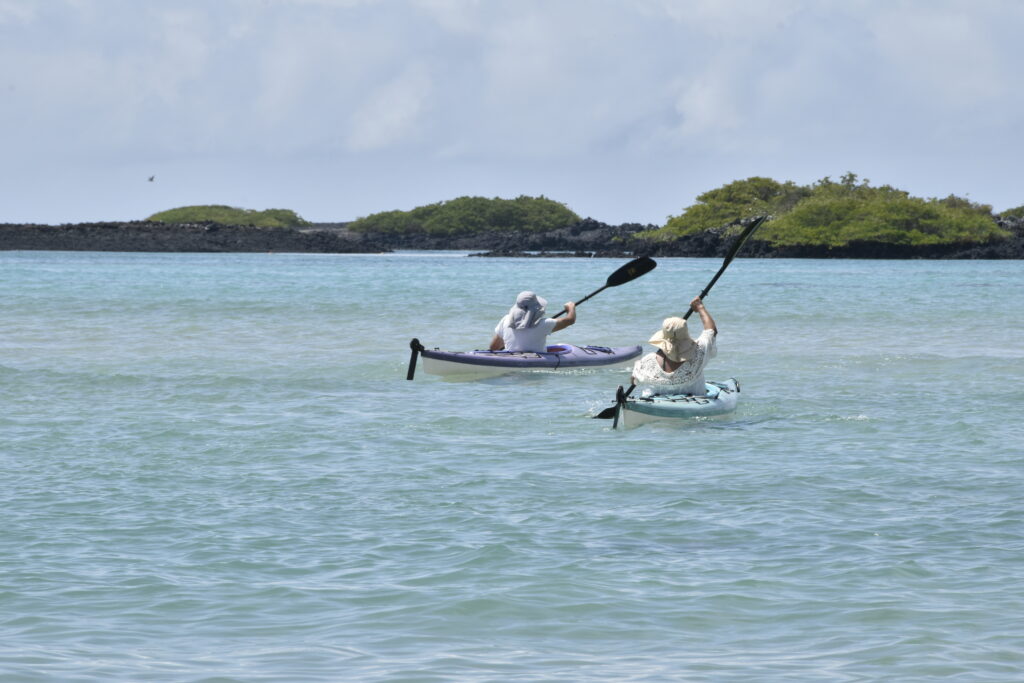
Choose activities carefully
Being in the know and knowledgeable about local rules is important during a trip to any place. In the Galapagos Islands there are a number of rules that can empower you to make confident and responsible choices.
- any kind of fishing from tour boars is forbidden
- motorised aquatic sports are forbidden in the National Park
- aerial tourism is forbidden in the National Park
Where speedboats are offered outside of the national park, consider whether you need to choose one of these options. Speedboats are actually very damaging to marine life underneath the path of a motor and noise as well as pollution are both unwelcome consequences of this type of vessel.
If you are offered any of these activities, reject them with confidence and rest assured you’ll be making an eco-conscious decision. Opting for a low-impact activity like kayaking can go a long way!
Choose providers carefully
Whilst choosing your activities can be important to your responsible decision making, so can choosing those you embark on ecotourism activities with. Many local providers will be able to discuss their sustainability efforts with you in person, otherwise you may want to find a sustainability section (or similar) on their website. Interestingly, you may find that larger operators offering week-long cruises have more to say about their sustainability policies and their ecotourism products. Often, this is due to their ability to afford certain certifications and put time into environmental policies. If you would like to opt for a smaller business and take a day trip, try to ask important questions about their operations. A great place to start is by asking for their National Park certificate.
For a list of larger operators with solid sustainability initiatives, click here.
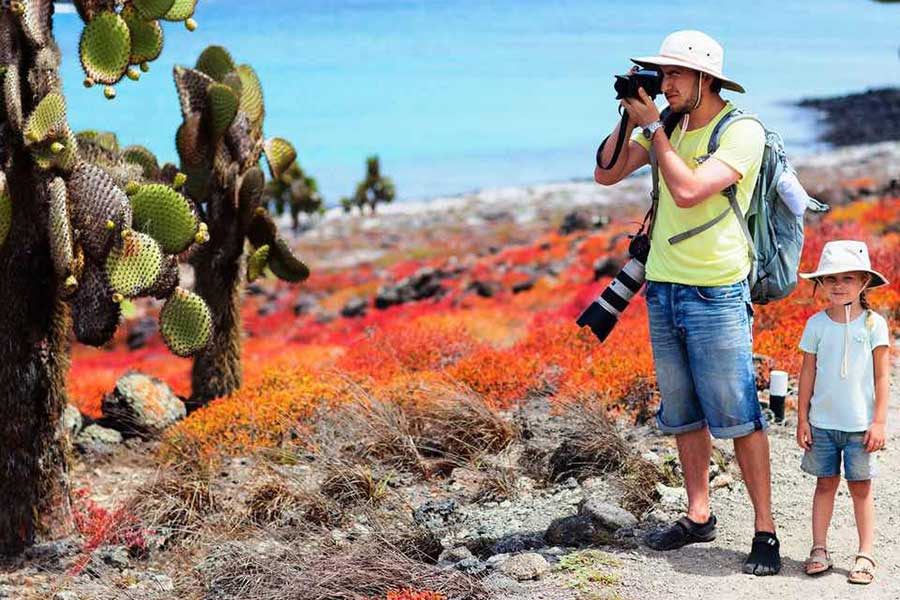
Stay within marked trails as you explore the Galapagos Islands
The wildlife in the Galapagos Islands suffers from being disrupted by the feet of visitors. For example, flamingoes on islands such as Isabela actually abandon their young in their nests when people get too close. It is important that whether you’re taking a hike or walking to a nearby beach that you stay on paths provided. Areas inside the National Park can only be visited with a licensed Galápagos National Park Guide. Don’t try to access these on your own!
Visit only authorised Galapagos campsites
Camping can be a great way to experience life on the Galapagos Islands and to immerse yourself in the natural beauty. It really is ecotourism personified! Having said that, it is important that you receive authorisation 48 hours before setting up camp. On uninhabited islands, camping is completely forbidden, however you may camp in designated areas. Find more information about camping here.
Visit the Galapagos Islands’ best research centres
In order to truly appreciate the natural value of the Galapagos Islands and to learn about the biodiversity, spend time at non-profits such as the Charles Darwin Research Centre. Here as well as the Interpretation Centre on San Cristobal you’ll find out about the history of the islands.
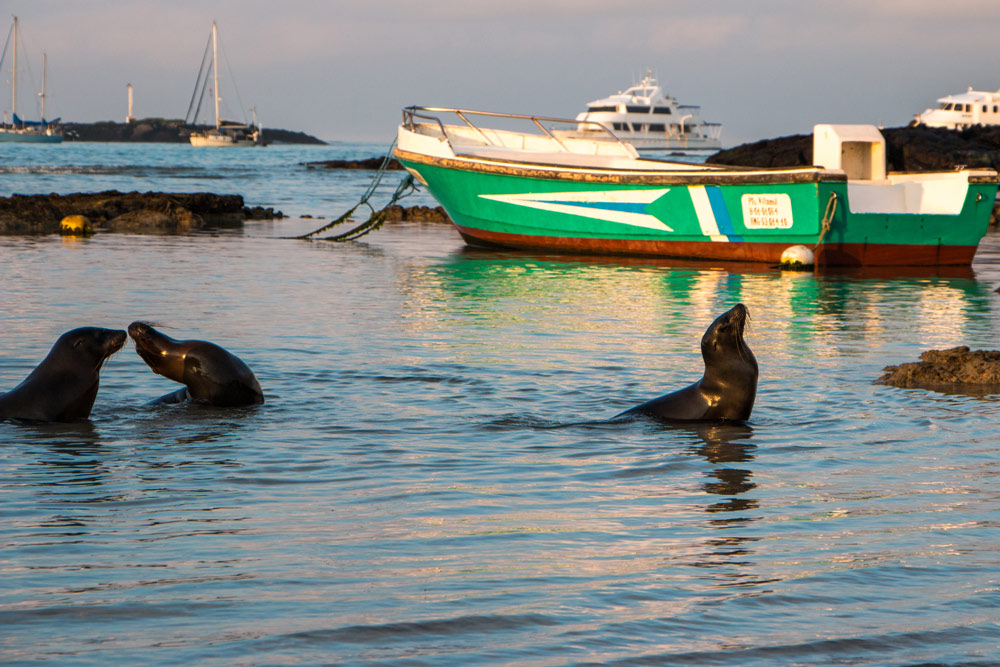
Do not approach, feed or photograph (with flash) wildlife
During a trip, whether snorkelling or hiking, do not touch animals. It is important that guests to the Galapagos Islands resit the urge to feed animals and disrupt the natural balance and ecosystem. In addition to this, if you are hoping to make a film or take professional photographs during your stay, you must get a National Park authorisation to do so. If you don’t have one and you’d like to take photographs, please don’t use flash.
Spend some time volunteering on the islands 3
There is no better way to get involved in ecotourism activities in the Galapagos Islands than to volunteer with responsible businesses or organisations. Help with habitat restoration or animal welfare through Ecuador Volunteers and Workaway.
Not interested in ecotourism? Consider not visiting the Galapagos Islands…
The Galapagos Islands is undoubtedly a remarkable destination for those fascinated in natural landscapes and wildlife. However, if is it purely a holiday destination you’re looking for, the Galapagos Islands may not be for you. Currently the Galapagos National Park and Charles Darwin Foundation are working to reintroduce 13 species that have gone extinct locally in recent years.
- For example the Galapagos Penguin which is currently on the IUCN Red List of Threatened Species has recently received attention. Building 120 high-quality nests constructed of stacked lava rocks, conservation projects have managed to increase the number of juvenile penguins by 15% in one year.
- Meanwhile, American Flamingos under threat from introduced species such as feral pigs, as well as by human disturbance are also being targeted. The success of a flamingo in producing young is dependent on nest disturbance. Once intervened with, the birds abandon their nests. Now protected the Galapagos Marine Reserve and National Park on Floreana, conservation projects are working to restore balanced ecosystems for flamingoes.
Whilst it is not purely the fault of tourists that the islands are under threat, the increase of human populations adds to the challenge of conservation. In addition to conservation, the National Park is also working to protect marine resources from pollution; of which a great deal comes from the tourism industry. This does not only include boat exhaust fumes and cruise related pollution but also plastic pollution.
In fact, a recent study on the islands found plastic in all of San Cristobal marine habitats and up to 400 plastic particles per square metre in some areas. In some areas, Galapagos marine vertebrates (including hammerheads, whale sharks and sea lions) have been found having swallowed plastic or getting entangled in debris. With a lack of conscious behaviour from tourists, the Galapagos Islands and its wildlife can suffer from these pollutants.
Therefore, if you’re looking for sun, sand and sea – and you’re not specifically looking to learn about conservation and the natural history of the Galapagos – you might like to consider another destination! The Galapagos Islands and its delicate ecosystems should remain as untouched as possible if they is to flourish well into the future.
Eco-friendly accommodation on Isabela Island
Hoping to immerse yourself in the natural beauty of the Galapagos Islands? Look no further than Chez Manany Galapagos Ecolodge. The green setting, access to all the best Isabela Island ecotourism attractions, proximity to the sea and nearby village makes this Galapagos accommodation perfect for ecotourists! Manany and Wilson love to talk about their innovative, eco-friendly ecolodge. Ask them a question about the sustainability policies implemented at the accommodation, here.
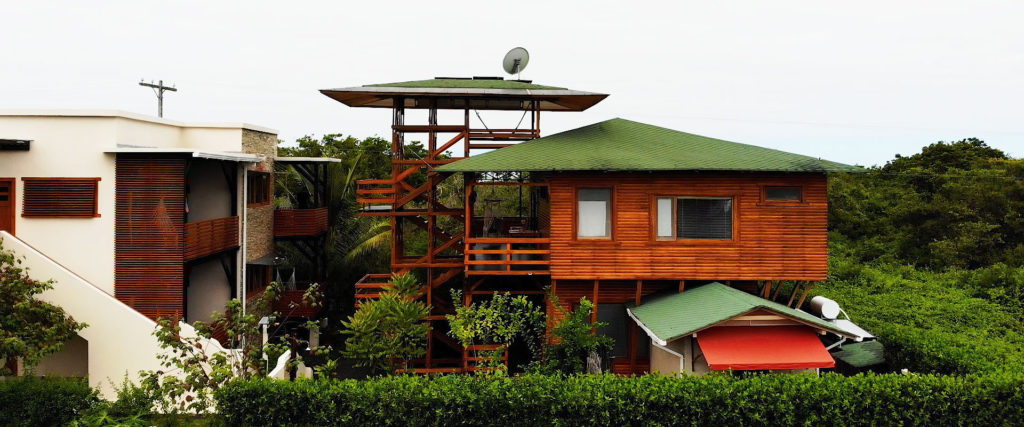
For information about things to do on Isabela Island in particular, check out this Ultimate Guide.

